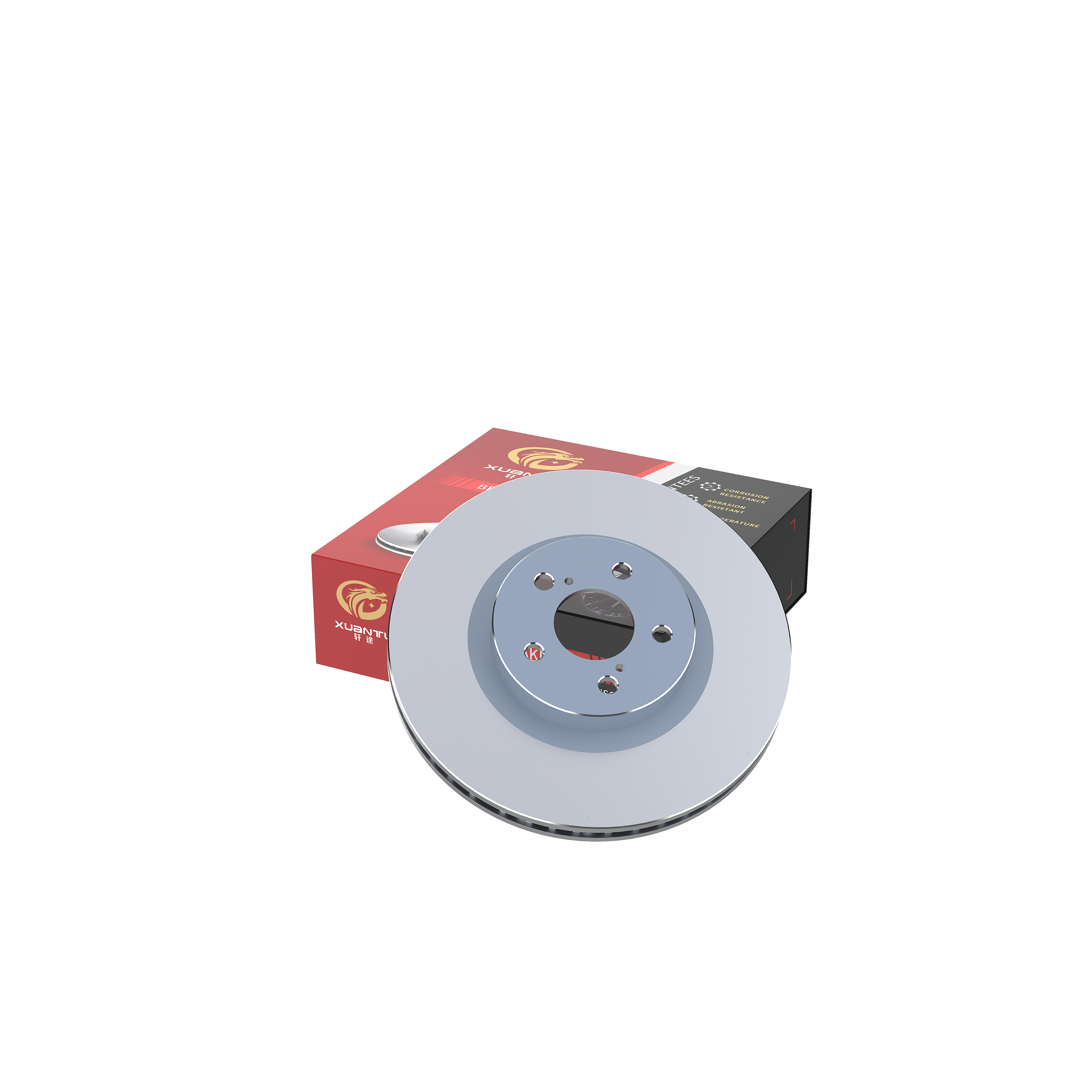Understanding the Critical Role of Quality Brake Components
When it comes to vehicle safety, few components are as crucial as brake rotors. These essential parts work tirelessly to transform your car's kinetic energy into heat through friction, effectively bringing your vehicle to a stop. While many drivers understand the importance of maintaining their braking system, the choice between premium and budget brake rotors often creates confusion and debate among vehicle owners.
The market offers a wide spectrum of brake rotors, ranging from high-end premium options to more affordable budget alternatives. This variation in price often leads to questions about real-world performance differences and whether the extra investment in premium components truly delivers meaningful benefits.
Material Composition and Manufacturing Processes
Premium Rotor Manufacturing Excellence
Premium brake rotors typically feature superior metallurgical compositions, often incorporating high-carbon content and precise alloy mixtures. These materials undergo stringent quality control processes and advanced heat treatment procedures that enhance their durability and performance characteristics. Manufacturers of premium rotors invest heavily in research and development, utilizing computer-aided design and testing facilities to optimize their products.
The casting process for premium brake rotors involves sophisticated techniques that ensure uniform cooling and minimal internal stress points. This attention to detail results in rotors that maintain their shape and performance characteristics even under extreme conditions, reducing the likelihood of warping or premature wear.
Budget Rotor Production Methods
Budget brake rotors generally employ simpler manufacturing processes and more basic material compositions. While still meeting minimum safety standards, these rotors may use lower-grade iron with less precise alloy mixtures. The casting and cooling processes are often accelerated to reduce production costs, which can lead to more variation in material density and potential stress points.
The quality control measures for budget rotors, while adequate for basic safety requirements, typically involve less rigorous testing and inspection procedures. This streamlined approach helps maintain lower price points but may result in more variation between individual units.
Performance Characteristics and Driving Experience
Premium Rotor Performance Benefits
Premium brake rotors consistently deliver superior stopping power and more precise brake feel. Their advanced metallurgy and precise manufacturing result in better heat dissipation, reducing the risk of brake fade during demanding driving conditions. The improved thermal management capabilities mean these rotors maintain consistent performance whether you're navigating rush hour traffic or enjoying a spirited drive on winding roads.
The superior construction of premium rotors also translates to notably quieter operation and reduced vibration. Drivers often report a more confidence-inspiring brake pedal feel and more linear response throughout the braking range. This enhanced predictability can be particularly valuable in emergency situations where precise brake modulation is crucial.
Budget Rotor Performance Considerations
While budget brake rotors provide adequate stopping power for normal driving conditions, their performance envelope may be more limited. These components might exhibit earlier signs of fade during repeated heavy braking and may generate more noise and vibration, particularly as they wear. The heat dissipation capabilities are typically less advanced, which can affect braking consistency in demanding situations.
Many drivers find that budget rotors require more frequent replacement, as they're more susceptible to warping and uneven wear patterns. However, for vehicles primarily used in routine commuting and light-duty applications, these limitations may not significantly impact daily driving experience.
Long-term Durability and Cost Analysis
Premium Rotor Longevity
The superior materials and manufacturing processes used in premium brake rotors typically result in significantly longer service life. These components often maintain their performance characteristics for extended periods, showing less susceptibility to warping, cracking, or uneven wear. The initial higher investment frequently translates to lower total ownership costs when considered over the full life cycle of the vehicle.
Premium rotors also tend to be more forgiving of occasional aggressive braking and varying driving conditions, maintaining their integrity even when subjected to thermal stress. This resilience can be particularly valuable for drivers who occasionally engage in more demanding driving scenarios.
Budget Rotor Lifecycle Considerations
Budget brake rotors, while more affordable initially, often require more frequent replacement due to accelerated wear patterns and reduced resistance to thermal stress. The cumulative cost of more frequent replacements can potentially exceed the initial savings, especially for vehicles subjected to regular use or more demanding driving conditions.
The shorter service intervals associated with budget rotors also mean more frequent maintenance visits and associated labor costs. However, for vehicles approaching the end of their service life or those used primarily for light-duty applications, the lower upfront cost might still represent a practical choice.
Making an Informed Decision
Vehicle Usage Patterns
The choice between premium and budget brake rotors should align closely with your specific driving needs and vehicle usage patterns. Performance vehicles, those used in challenging environments, or cars regularly carrying heavy loads benefit most from premium rotor characteristics. The enhanced durability and consistent performance justify the higher initial investment in these scenarios.
For vehicles primarily used for routine commuting in moderate conditions, budget rotors may provide satisfactory performance while offering initial cost savings. However, drivers should carefully consider their long-term ownership plans and typical driving conditions when making this decision.
Value Considerations
When evaluating the true value proposition of brake rotors, consider factors beyond the initial purchase price. Factor in expected service life, replacement frequency, and the potential impact on other brake system components. Premium rotors often provide better protection for related components like brake pads, potentially reducing overall system maintenance costs.
Consider also the value of enhanced safety margins and performance consistency that premium rotors provide. For many drivers, the added peace of mind and reduced maintenance frequency justify the higher upfront investment in quality components.
Frequently Asked Questions
How long do premium brake rotors typically last compared to budget options?
Premium brake rotors typically last 50-70% longer than budget alternatives under similar driving conditions. While premium rotors might last 70,000 miles or more, budget options often require replacement around 30,000-40,000 miles, though actual longevity varies based on driving habits and conditions.
Can mixing premium and budget brake rotors affect vehicle performance?
Installing different quality brake rotors on the same axle can lead to uneven braking performance and potentially dangerous handling characteristics. It's always recommended to use matched pairs of brake rotors on each axle to ensure balanced and predictable braking response.
Are premium brake rotors worth the extra cost for normal daily driving?
For daily driving, premium brake rotors often justify their higher initial cost through longer service life, more consistent performance, and reduced maintenance frequency. While budget rotors may seem more economical initially, the total cost of ownership, including more frequent replacements, often favors premium options in the long run.

